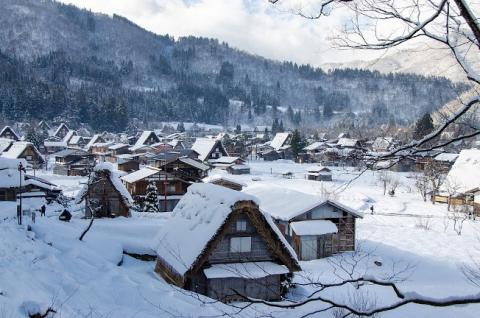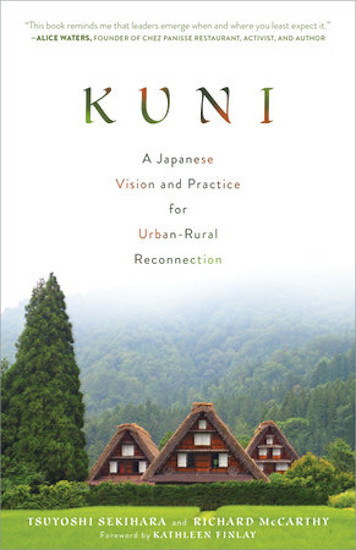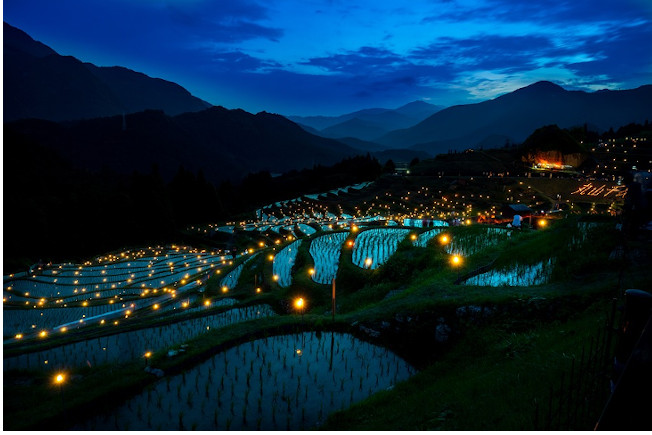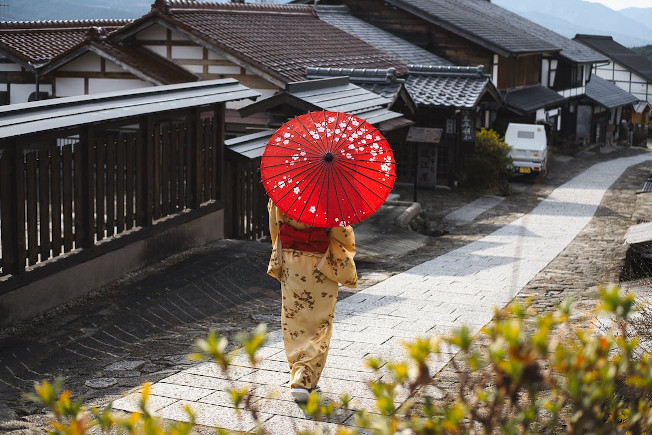How a Small, but Growing Movement in Japan Is Reimagining Community

The moment my feet touched the ground in Tsuyoshi Sekihara’s village of Nakanomata, I was struck by the proportionality of the place. Very quickly, I understood his passion for right-sized communities. You can walk the circumference of the village within an hour. Wooden farmhouses, hundreds of years old, cluster beneath the canopy of trees along the river that runs from the mountains to the Sea of Japan. The river and its thousand-year-old manicured tributaries provide irrigation for terraced rice fields that define the rhythm of work, celebration, and nourishment in the region. One of my Japanese traveling companions gushed: “I’m not sure if I’ve ever walked through a functioning traditional rice village as intact as this one. I’ve only read about them.”
This is my first visit to a kuni, a new form of community first imagined by Sekihara and now coming to life in Japan.
What makes a kuni unique is that it is compact but contains all the elements needed for human life. It is hard to see the entire scope of kuni if you narrowly focus on nature, agriculture, commerce, a local organization, education, and welfare. Since a kuni is meant to benefit each individual in the community, it needs to reach the spiritual aspects of individuals. “Why am I the only one in this world? Why do others exist? Who am I, and who are others? What does it mean to live with others?” And, “When I live with others, what is the appropriate structure and size for humanity to be most valued?”

In the “Kuni Manifesto” that follows, Sekihara outlines the principles of this new form of community that seeks to address both the personal and political challenges of our era.
A kuni can be created anywhere through the determination of one person. Even a hamlet on the verge of extinction can revive its future through the will of one person.
As we despair about shrinking rural areas and are intimidated by cities growing to a monstrous scale, where are we supposed to go? We are dazzled by image, enslaved by fads, and compelled to buy, buy, buy.
Can we stop buying and start making? Stop viewing and start finding? Stop speaking and start listening? When did these things become so difficult?

Kuni is the name for a new community
A kuni has at least 500 people but no more than 2,000. What is too small? Small rural communities in rapid decline lose diversity and experience the rise of mutual surveillance and small dictatorships. What is too large? In gigantic cities that grow exponentially, people become part of the scenery.
Everyone is equal in a kuni
In a kuni, people share in the abundance and the hardships provided by the land. This brings people together and forms a sense of “we.” There is no discrimination based on race, religion, income or ideology.
Kuni is equipped with a regional management organization (RMO)
The RMO is a democratic organization that takes care of small public services. These services include diverse programs such as education programs to enhance children’s five senses, programs to maintain the health of the elderly, and administrative tasks. The RMO also serves as an intermediary for repeat visitors, nurturing regional economies using local resources, implementing small-scale transportation services, and conserving nature. By providing these services, young staff at an RMO also hone their skills in comprehensive policymaking.
Kuni is a link between residents and repeat visitors
A kuni is not solely made up of residents, but becomes a community when it includes repeat visitors from cities, who feel affection and a sense of belonging to the land.
In a kuni, people meet and talk about the abundant harvest, the damage done by a typhoon, a newly born child, a death in the community, the taste of vegetables picked that morning, the taste of spring water from the mountain, the scent of the wind, and the cold rain from yesterday.
Do you think a kuni like this is a dream? All you need in the beginning is a small will.

Kuni is self-sufficient
Kuni requires an economy based on self-sufficiency and serves as a place of mutual benefit. For repeat visitors from cities, it serves as a kind of insurance policy against ongoing urban stress and anxiety. For residents, repeat visitors bring economic activity and new relationships.
Life in a kuni is circular and forms a beautiful spiral
The basis of kuni is circularity, where production and consumption are in balance. A life with circularity forms a beautiful spiral over time.
Kuni embraces the whole person
In a kuni, people are not cogs in a machine.
The time for kuni is now
Cities are growing bigger, and wild and savage, and rural places are disappearing.
Kuni is a place for young people who seek interconnectedness
Local governments are downsizing and are no longer capable of providing public services. An RMO can provide these services, and through work in an RMO, young people can help shape the future.
Adapted from Kuni: A Japanese Vision and Practice for Urban-Rural Reconnection (North Atlantic Books) by Tsuyoshi Sekihara and Richard McCarthy. Published with permission.
Highbrow Magazine
Image Sources:
--North Atlantic Books
--AIWorldexplore (Pixabay, Creative Commons)
--Pen Ash (Pixabay, Creative Commons)
--Evgeny Tchebotarev (Pexels, Creative Common)































































































































































































































































































































